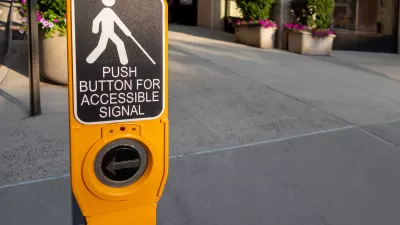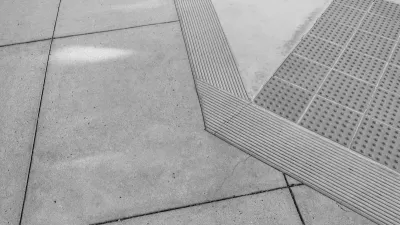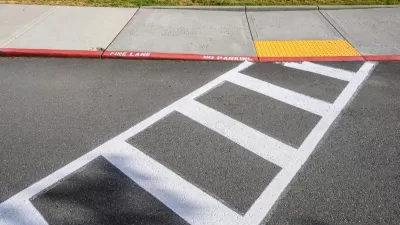Local agencies will soon be tasked with adhering to federal right-of-way accessibility rules: comprehensive guidelines for accessible streets and sidewalks.

Federal officials will take action to enforce Public Right-of-Way Accessibility Guidelines (PROWAG), a set of standards for accessible streets that remain widely absent on many U.S. streets. According to Don Kostelec, "The United States Access Board develops them as guidelines, but it takes official action by the federal government to turn them into federal standards."
"PROWAG provides a more relevant application of accessibility requirements to street settings than the current standards known as the ADA Accessibility Guidelines, commonly called ADAAG." In contrast with ADAAG, which applies more effectively to buildings and public facilities, PROWAG provides guidance for streets and sidewalks, but remains a draft document that agencies are not mandated to follow. For Kostelec, "This is why making PROWAG the official standard represents a long-awaited shift in the tectonic plates of ADA policy."
However, Kostelec warns that even if PROWAG becomes law, it will take a long time to ensure compliance by local agencies. "All of this means that, even when made the standard, the public will be reliant on pressuring many federal, local, and state agencies to make PROWAG their own."
FULL STORY: Feds Adopt Better Street Accessibility Guidelines — But Will They Make a Difference?

Study: Maui’s Plan to Convert Vacation Rentals to Long-Term Housing Could Cause Nearly $1 Billion Economic Loss
The plan would reduce visitor accommodation by 25,% resulting in 1,900 jobs lost.

Alabama: Trump Terminates Settlements for Black Communities Harmed By Raw Sewage
Trump deemed the landmark civil rights agreement “illegal DEI and environmental justice policy.”

Why Should We Subsidize Public Transportation?
Many public transit agencies face financial stress due to rising costs, declining fare revenue, and declining subsidies. Transit advocates must provide a strong business case for increasing public transit funding.

Paris Bike Boom Leads to Steep Drop in Air Pollution
The French city’s air quality has improved dramatically in the past 20 years, coinciding with a growth in cycling.

Why Housing Costs More to Build in California Than in Texas
Hard costs like labor and materials combined with ‘soft’ costs such as permitting make building in the San Francisco Bay Area almost three times as costly as in Texas cities.

San Diego County Sees a Rise in Urban Coyotes
San Diego County experiences a rise in urban coyotes, as sightings become prevalent throughout its urban neighbourhoods and surrounding areas.
Urban Design for Planners 1: Software Tools
This six-course series explores essential urban design concepts using open source software and equips planners with the tools they need to participate fully in the urban design process.
Planning for Universal Design
Learn the tools for implementing Universal Design in planning regulations.
Smith Gee Studio
Alamo Area Metropolitan Planning Organization
City of Santa Clarita
Institute for Housing and Urban Development Studies (IHS)
City of Grandview
Harvard GSD Executive Education
Toledo-Lucas County Plan Commissions
Salt Lake City
NYU Wagner Graduate School of Public Service





























